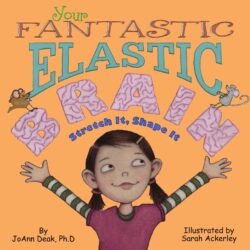SEL Tip: Remember Whoops!, How?, and Yet

Encountering obstacles is an inevitable part of any learning journey. How students respond to these obstacles can significantly impact their growth and development. To support students in navigating challenges with a positive mindset, we encourage the use of a transformative acronym. Remember Whoops! How? and Yet. This linguistic shift is not just about word choice; it’s a fundamental change in perspective that fosters resilience, creativity, and continuous growth.
Whoops!
Starting with “Whoops!”, we shift the atmosphere around mistakes from one of frustration to one of acceptance and even celebration. By replacing phrases like “Dang it!” with “Whoops!”, we normalize mistakes as an integral part of the learning process. This single word embodies a spirit of light-heartedness and curiosity, encouraging students to view setbacks as natural and necessary steps toward mastery.
How?
Moving on to “How?”, we transform the doubt implied in “Can I?” into a proactive “How can I…?” This change in questioning opens up a world of possibilities, shifting the focus from questioning ability to exploring methods and strategies. It encourages ideation, pushing students to think creatively about solutions and to view obstacles as puzzles to be solved rather than impassable barriers.
Yet
Lastly, the addition of “Yet” to the statement “I can’t do this” transforms it into “I can’t do this yet.” This simple yet powerful addition emphasizes that learning is a journey. It reinforces the understanding that skills and understanding are developed over time, not overnight. It promotes a culture of perseverance and long-term effort, encouraging students to engage in prototyping, testing, and refining their approaches.
In Conclusion
Remember Whoops! How? and Yet. They serve as crucial tools in fostering a growth mindset. They help students to embrace challenges, learn from failures, and continually strive for improvement. By integrating these reframed thoughts and language into daily practice, we not only help students navigate immediate obstacles but also equip them with the mindset and skills for lifelong learning and growth. This approach transforms the classroom into a dynamic environment where every challenge is an opportunity, and every “mistake” is a step towards greater understanding and capability.
If you found this content helpful, you might enjoy this Imagineerz blog post and check out 45 Growth Mindset Mantras!


